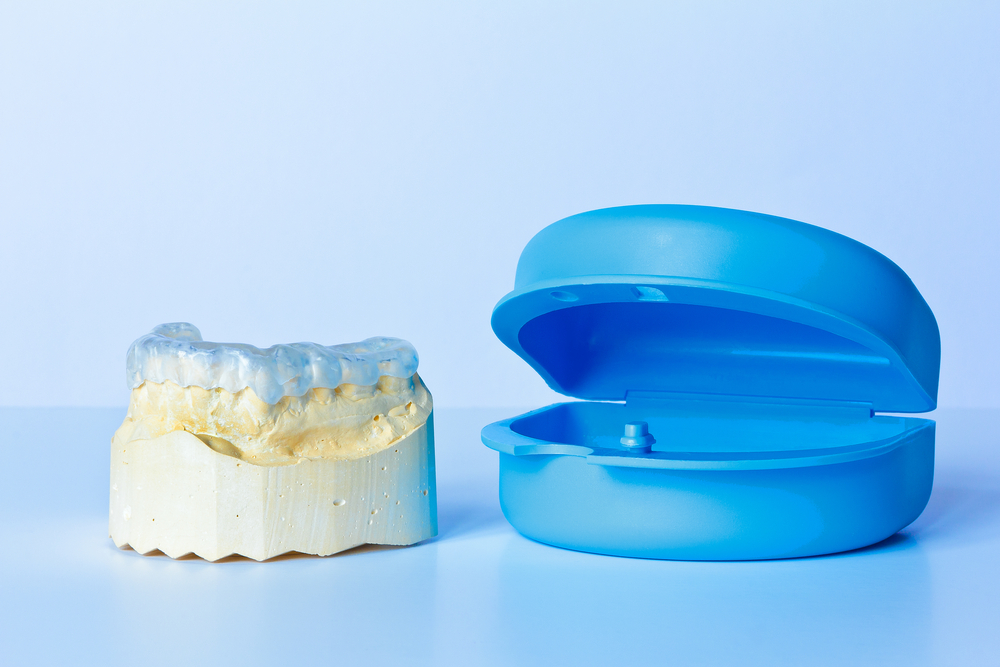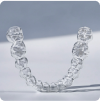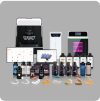
How to Develop High-Quality Night Guards and Retainers With 3D Printing
Creating night guards and retainers is a long process that can be uncomfortable for patients. With 3D printing technology, fabricating the dental devices is easier, shortening the time and making it more cost-effective. The process is also more satisfactory for patients as it eliminates the step of developing oral molds.
The traditional process of getting a night guard or retainer requires multiple visits to the dentist’s office. The dentist takes impressions of the patient’s mouth to create negative oral molds by placing trays filled with unpleasant-tasting ceramic material. The impressions are then sent to a dental lab where the night guards are produced. Eventually, they are shipped back to the dentist to check for patient fit and use. The entire process takes about three weeks and may require additional time to create new molds if there is not a proper fit .
3D printing is a viable manufacturing method for volume and customized production in a number of industries, including footwear, aerospace engineering, and dentistry. Used for the last 35 years, 3D printing eliminates several steps from the traditional production method, significantly accelerating development without compromising product quality. 3D printing night guards and retainers offers several benefits for patients and dentists, making it increasingly the preferred method for developing dental devices.

3D Printing Night Guards and Retainers: How It Works
Unlike the invasive and uncomfortable molding process, 3D printing is seamless and straightforward. During a quick patient visit, a digital intraoral scan is painlessly taken using a specialized wand. Computerized scans are then combined, and converted into a unique 3D CAD model. Once the 3D CAD model has been verified, the file is sent electronically to a nearby 3D Printing Smart Factory.
At the 3D Printing Smart Factory, each unique 3D CAD file is converted into a printable form, ready to be fabricated by a production 3D printer. The retainer or night guard is printed, cured, and bugged in less than 45 minutes. The night guard or retainer is ready to be sent back to the dental office for a final fitting on the patient. If adjustments are needed, the dentist can modify the file and resend for a new print.
How 3D Printing Night Guards and Retainers Combined with Intraoral Scans Benefits Dentists and Patients
Dentists are increasingly choosing to produce night guards and retainers with 3D printing because it provides a better experience for patients, simplifies the manufacturing process, and accelerates turnaround time:
1. Better Patient Experience
While dentists have tried different methods to reduce patient discomfort when creating a mold, such as using smaller trays or applying an anesthetic spray, none of them have been successful. Digital intraoral scans, however, are not invasive and are completed more quickly, providing a better patient experience. With just a wave of a scanning wand, dentists can gather the information to create a 3D CAD model for the dental 3D printing service.
2. Accelerated Turnaround Time
The average turnaround time for a retainer or night guard is around three weeks using the traditional fabrication method. Plaster impressions are created and sent to a dental lab, where they are used to make a life-sized tooth model. The model is then covered by a sheet of hot thermoplastic. As the sheet cools, it takes the shape of the caster mold. Once completely cooled, the plastic is removed, cut-to-size, buffed, polished, and shipped back to the dentist or orthodontist.
With 3D printing technology, night guards and retainers can be created in less than an hour using a far simpler process. There is also greater flexibility in where 3D printing smart factories are located, reducing shipping times. With faster fabrication time and shorter shipping distances, 3D printing can deliver night guards and retainers in a matter of days rather than weeks.
| 3D-printed night guards and retainers can often be delivered in a matter of days rather than weeks. |
3. Simplifying the Manufacturing Process
3D printing eliminates the use of molds and thermoplastic sheets, simplifying the process and reducing the overall amount of equipment for production of night guards and retainers. Currently, dental and orthodontist offices outsource the fabrication of oral devices to dental service centers. However, as 3D printing becomes more accessible, 3D printers may become part of every dental office.
Optimizing the Development of Night Guards and Retainers With 3D Printing
New advancements in 3D printing technology are rapidly evolving the dental manufacturing process. LuxCreo’s dental printing material and (LEAP) technology are enabling new possibilities for mass production and customization in dentistry. If you are interested in 3D printing night guards and retainers for your practice, or if you simply want to learn more about the process, visit LuxCreo’s contact page or call (650) 336-0888.
Subscribe to Our Newsletter
Be the first to get our latest updates and free trials!
Popular Resources
Follow Us
Featured Products

4D Aligner™
First Smart ActiveMemory™
Aligner

iLux Pro Dental Solution
Ultimate 1-Click Dental
Application Solution

LuxCloud Dental
Your One-stop Digital Dentistry
Platform






